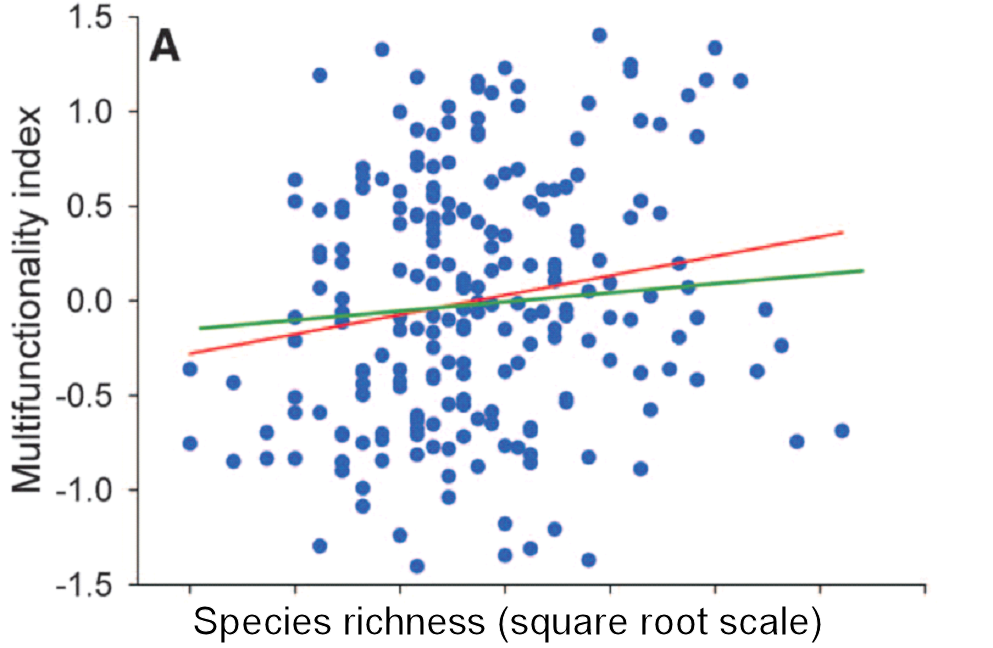There are two global views about wildlife management that are echoed in conservation biology. The first view is that we manage wildlife for the sake of wildlife so that future generations have the ability to see what we see when we go out into the woods and fields. The second view is that we manage wildlife and indeed all of nature for humans to exploit. The second view was elegantly summarized many years ago by White (1967):
“Our science and technology have grown out of Christian attitudes toward man’s relation to nature which are almost universally held not only by Christians and neo-Christians but also by those who fondly regard themselves as post-Christians. Despite Copernicus, all the cosmos rotates around our little globe. Despite Darwin, we are not, in our hearts, part of the natural process. We are superior to nature, contemptuous of it, willing to use it for our slightest whim. The newly elected Governor of California, like myself a churchman but less troubled than I, spoke for the Christian tradition when he said (as is alleged), “when you’ve seen one redwood tree, you’ve seen them all.” (p.1206)
The first view of wildlife is now for ecologists the dominant conservation ethic of our time, the recognition that wildlife and nature in general has intrinsic value (Vucetich et al. 2015). Yet when there are conflicts in environmental management, the second view that humans trump all comes to the fore. Think of examples in your region. When caribou and moose are declining, the shout goes up to shoot the wolves. The golden example of this is perhaps Norway where wolves are nearly all gone and moose are superabundant and fed in winter so that there are plenty for hunters to shoot in the following year. Where domestic and feral cats threaten bird populations, the view typically expressed is that cats are our pets and quite cute, and certainly cannot be regulated or controlled as feral pests.
One of the main defenses of biodiversity conservation during the last 20 years has been the role of ecosystem services. The utilitarian view that ecosystems do things for humans that you can then calculate in dollars has been used to carry conservation forward for those who subscribe to the second global view of nature as something that exists only for our exploitation. Two recent reviews are critical of this approach. Silvertown (2015) argues that the ecosystem services paradigm has been oversold and suggests alternatives. An important critical overview of the conundrum of biodiversity research is presented very clearly in Vellend (2017) and is essential reading for all those interested in environmental management issues and the collision of science and human values expressed in our two global views of biodiversity conservation.
Wildlife managers must operate with the first view in mind to manage wildlife for wildlife but at the same time must act in ways determined by their political masters to adopt the second view of human values over wildlife. Ecologists walk a thin line in this dilemma. A good example is the book by Woinarski et al. (2007) which details the disastrous state of environmental management in northern Australia. There are courageous attempts to resolve these management problems and to bridge the two global views by bringing ecological knowledge into policy development and environmental management (e.g. Morton et al. 2009, Lindenmayer et al. 2015). Many others beginning with Aldo Leopold in North America and many others in Europe have made elegant pleas for the first global view of wildlife conservation. The attempts now to bridge this gap between exploitation and preservation are to bring social sciences into environmental research programs, and these efforts can be increasingly effective. But there is a large contingent of the public that support the second view that humans are the most important species on earth. The increasing collision of rising human populations, resource shortages, and climate change produce a perfect storm of events that place wildlife management and environmental sustainability in a difficult position. Everyone who is able must speak up for the first global view in order to achieve a sustainable society on earth and for wildlife and biodiversity in general to be protected for future generations.
Lindenmayer, D.B.,et al. 2015. Contemplating the future: Acting now on long-term monitoring to answer 2050’s questions. Austral Ecology 40(3): 213-224. doi: 10.1111/aec.12207.
Morton, S.R., et al. 2009. The big ecological questions inhibiting effective environmental management in Australia. Austral Ecology 34(1): 1-9. doi: 10.1111/j.1442-9993.2008.01938.x.
Silvertown, J. 2015. Have Ecosystem Services been oversold? Trends in Ecology & Evolution 30(11): 641-648. doi: 10.1016/j.tree.2015.08.007.
Vellend, M. 2017. The biodiversity conservation paradox. American Scientist 105(2): 94-101.
Vucetich, J.A., Bruskotter, J.T., and Nelson, M.P. 2015. Evaluating whether nature’s intrinsic value is an axiom of or anathema to conservation. Conservation Biology 29(2): 321-332. doi: 10.1111/cobi.12464.
White, L., Jr. 1967. The historical roots of our ecologic crisis. Science 155(3767): 1203-1207.
Woinarski, J., Mackey, B., Nix, H., and Traill, B. 2007. The Nature of Northern Australia: Natural values, ecological processes and future prospects. Australian National University E Press, Canberra. (available at: http://press.anu.edu.au/publications/nature-northern-australia)
